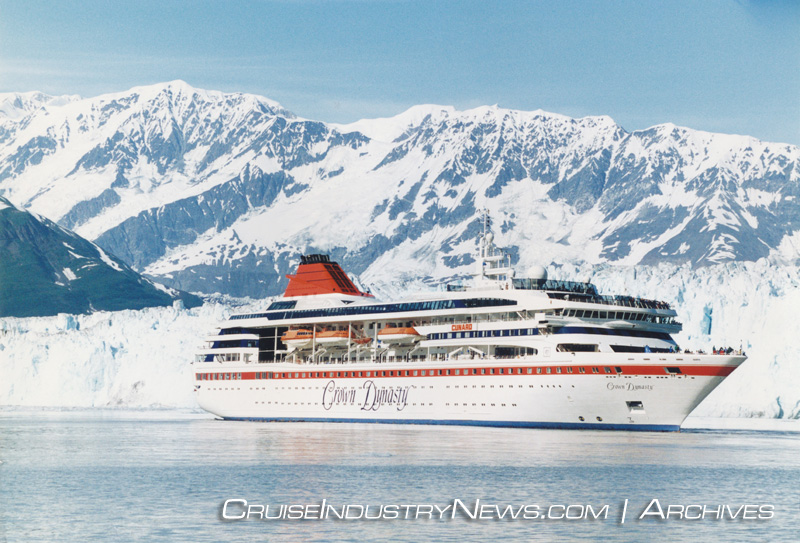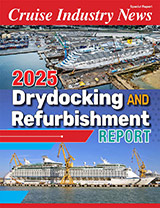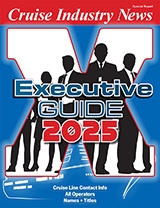Any maritime historian can go into elaborate detail about Cunard Line’s rich ocean-liner heritage dating back to 1840, but most overlook the very interesting and dramatic time for Cunard in the 1980s and 1990s.
Cunard was purchased by British conglomerate Trafalgar House in 1971, when the line also had a large cargo fleet, which was eventually sold off.
1980s
In 1983 Cunard picked up the Sagafjord and the Vistafjord when Norwegian America Cruises pulled out of the industry.

The 1983/1984 span also saw Trafalgar nearly purchase P&O, but backed out of the deal at the last second.
Shortly thereafter, terrorist attacks leveled the Mediterranean market, leaving Norske Cruise behind on ship-yard payments on both of its Sea Goddess vessels. So, Norske Cruise entered into a long-term charter agreement with Cunard to avoid giving both Sea Goddess (later described as the “Halo” above Cunard) vessels to Royal Viking Line in a deal to satisfy yard payments, according to rumors reported by Cruise Industry News (CIN) at the time. Cunard eventually took ownership of both ships.
In 1987, the line spent $180 million refurbishing and re-engining the QE2 at Lloyd Werft. Cunard then bought Ellerman Lines, a small cargo company, only to sell off those ships a couple years later.
1990s
In 1993, Cunard executives said they were “getting Cunard back on a solidly profitable course.”
Cunard assumed sales and marketing responsibilities for the river vessels of Peter Deilmann in 1993.
At the same time, Cunard had entered into an agreement with the Effjohn Group whereby Cunard took over sales and marketing of the Crown Cruise Line fleet.

The ships operated under the name Cunard Crowd, as executives told CIN, Cunard was “re-establishing its reputation in the premium class category.”
In 1994, Cunard also took the opportunity to buy the Royal Viking brand from Norwegian Cruise Line, along with the Royal Viking Sun.
As 1994 came and went, Cunard had five luxury ships, five premium ships, five river boats, and a major PR mess when the QE2 sailed unfinished from a drydocking.
By 1996, Cunard was being referred to as a “money-losing company” by the press, and new executives were targeting being in the black by 1998. Meanwhile, Trafalgar had new Norwegian owners in Kvaerner.
Carnival Corp
Kvaerner promptly sold Cunard to Carnival Corporation in 1998 for $500 million, and Carnival merged Cunard with Seabourn. Carnival would own 68 percent of the new company while Atle Brynestad (founder of Seabourn) and a group of Norwegian investors owned the other 32 percent.
Seabourn was moved from San Francisco to Miami, while Cunard abandoned its long-time midtown-Manhattan location on Madison Avenue for the warmer Florida climate. In the years prior, Cunard had downsized its New York-based workforce considerably, and moved the reservations department to Queens.
By summer 1998, the combined fleet featured five Cunard ships and three Seabourn vessels. The Queen Mary was on the drawing board.
In early 1999, Cunard/Seabourn executives told CIN the merger of the two companies would cut costs by $25 million in that year alone. Notably, that executive team did not include any members from the “old” Cunard executive group, which had eight different CEOs from 1984 through 1998.
Carnival moved Cunard’s U.S. headquarters once again, as it bought P&O shortly after the turn of the century, into the Princess offices in California. A few years later, Carnival UK would take over management of Cunard, which is now back in Southampton.



